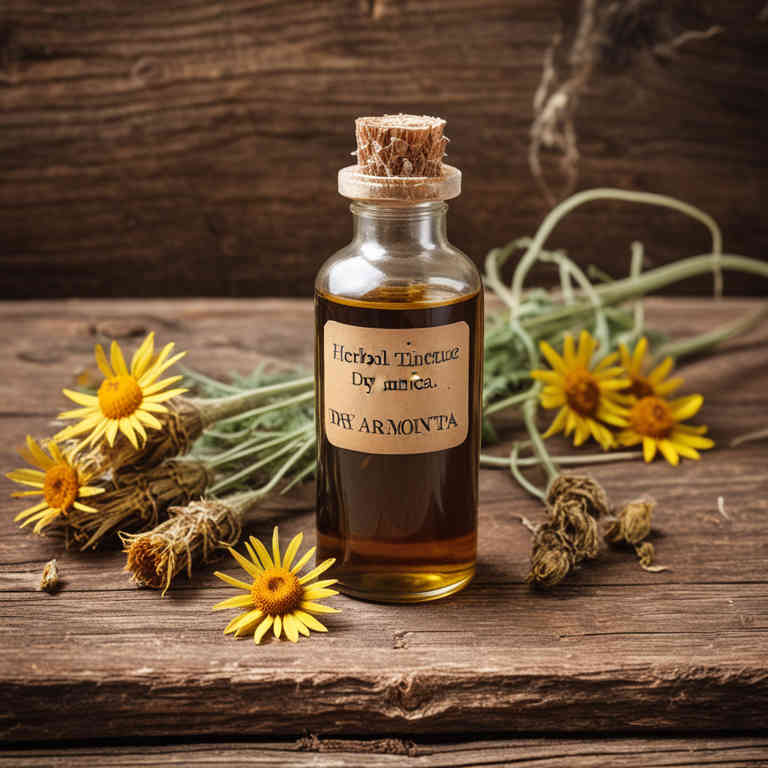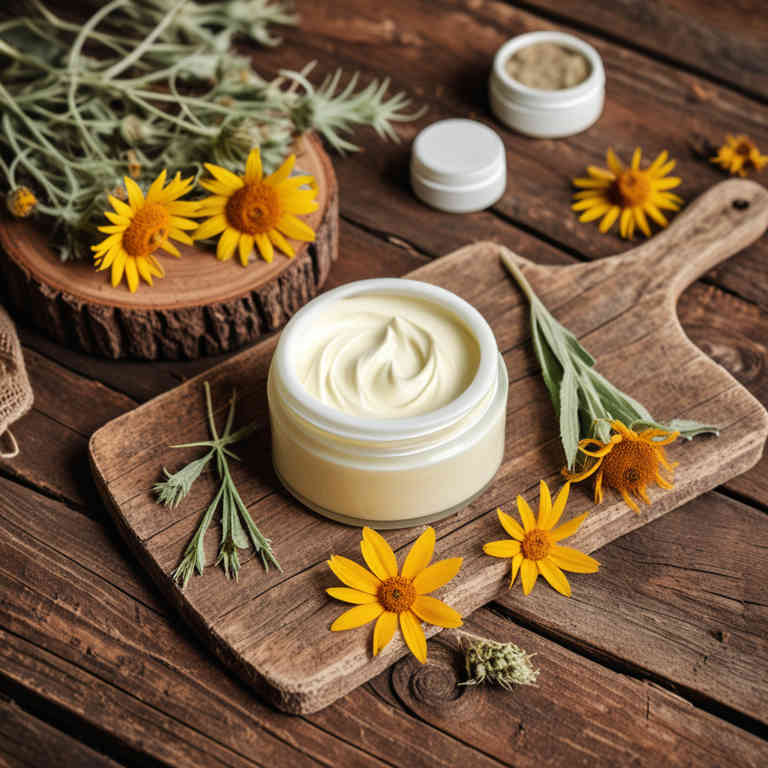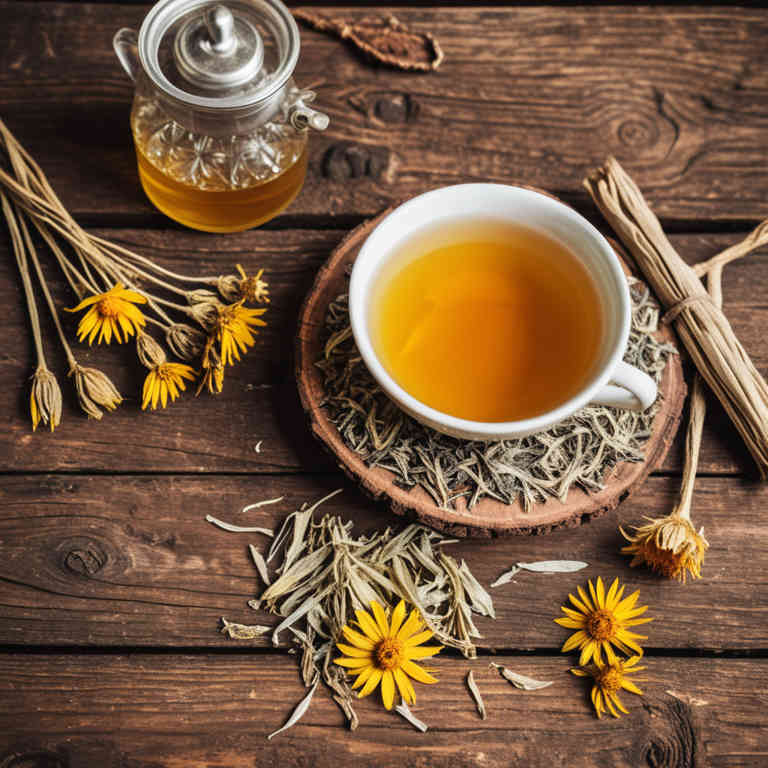10 Best Arnica Montana Preparations

The best medicinal preparations of Arnica montana are tinctures, liniments, creams, ointments, and oils, each designed to harness its anti-inflammatory and analgesic properties.
Tinctures are commonly used for internal ailments, while liniments and creams are applied topically to reduce pain and swelling.
Ointments provide longer-lasting relief for muscle aches, and oils are often used in massage therapy.
These preparations are widely utilized in herbal medicine for treating bruises, sprains, and inflammatory conditions.
Proper use is essential to avoid skin irritation or toxicity.
Below there's a list of the 10 best herbal preparations of arnica montana for medicinal purposes.
1. Tinctures
Arnica montana tinctures is commonly used to alleviate pain, reduce inflammation, and promote healing in various musculoskeletal conditions.
They are frequently applied topically to treat bruises, sprains, strains, and other injuries, as well as to relieve symptoms of arthritis and muscle soreness. The most common medicinal uses include reducing swelling, improving circulation, and providing anti-inflammatory effects for topical application. The bioactive constituents responsible for these properties include helenalin, flavonoids, sesquiterpene lactones, and essential oils, which exhibit anti-inflammatory, analgesic, and antiseptic activities.
However, due to its potency, arnica tinctures should be used with caution and avoided on open wounds or mucous membranes.

2. Liniments
Arnica montana liniments is commonly used to alleviate pain and inflammation associated with muscle aches, sprains, and bruises.
These liniments are often applied topically to the skin to reduce swelling and promote healing in minor injuries. The most common medicinal uses include treating conditions such as arthritis, back pain, and sports injuries. The bioactive constituents responsible for its medicinal properties include sesquiterpene lactones, flavonoids, and caffeic acid.
These compounds possess anti-inflammatory, analgesic, and antioxidant effects that contribute to its therapeutic value.

3. Creams
Arnica montana creams is commonly used to treat pain and inflammation associated with bruises, sprains, and muscle aches.
These creams are widely applied in sports medicine and alternative therapies for their anti-inflammatory and analgesic effects. The most common medicinal uses include reducing swelling, alleviating pain from injuries, and easing symptoms of arthritis. The bioactive constituents responsible for these effects include sesquiterpene lactones, flavonoids, and phenolic compounds, which have anti-inflammatory, antioxidant, and mild analgesic properties.
However, they should be used with caution, as they can cause skin irritation in some individuals.

5. Oils
Arnica montana oils is commonly used to treat inflammation, pain, and bruising associated with musculoskeletal injuries and conditions.
It is frequently applied topically to reduce swelling, alleviate muscle soreness, and promote healing in cases of contusions or sprains. The most common medicinal uses include treating arthritis, sports injuries, and skin conditions such as eczema or psoriasis. The bioactive constituents responsible for its medicinal properties include sesquiterpene alcohols, flavonoids, and caffeic acid derivatives, which exhibit anti-inflammatory, analgesic, and antioxidant effects.
However, it should be used with caution, as it can be toxic if ingested.

6. Decoctions
Arnica montana decoctions is commonly used to treat inflammatory conditions, muscle pain, and skin injuries.
These preparations are often applied topically to reduce bruising, swelling, and pain associated with contusions or sprains. They are also used in some traditional practices for arthritis and other inflammatory disorders. The bioactive constituents include sesquiterpene lactones, flavonoids, and phenolic acids, which contribute to its anti-inflammatory and analgesic effects.
However, internal use is generally discouraged due to potential toxicity.

7. Capsules
Arnica montana capsules is commonly used to treat inflammation, pain, and bruising associated with injuries or conditions such as arthritis.
They are frequently used for musculoskeletal pain, including back pain, joint pain, and muscle soreness. The most common medicinal uses include reducing swelling, alleviating pain, and promoting healing in conditions like sprains, strains, and contusions. The bioactive constituents responsible for these effects include sesquiterpene lactones, flavonoids, and coumarins, which have anti-inflammatory and analgesic properties.
However, it is important to note that arnica montana should not be used on open wounds or by pregnant women due to potential toxicity.

8. Poultices
Arnica montana poultices is commonly used to treat bruises, sprains, and inflammatory conditions such as arthritis.
This herbal preparation is also applied to reduce swelling and pain associated with muscle strains and joint injuries. The most common medicinal uses include alleviating symptoms of inflammation, pain, and skin irritations. The bioactive constituents responsible for its medicinal properties include sesquiterpene lactones, flavonoids, and caffeic acid derivatives.
These compounds possess anti-inflammatory, analgesic, and antiseptic properties that contribute to its therapeutic effects.

9. Teas
Arnica montana teas is commonly used to alleviate pain, reduce inflammation, and promote healing in conditions such as muscle soreness, arthritis, and bruises.
This herbal preparation is often utilized for its anti-inflammatory and analgesic properties, making it a popular remedy for minor injuries and joint discomfort. The most common ailments treated with arnica montana tea include sprains, strains, headaches, and skin irritations. The bioactive constituents responsible for its medicinal effects include sesquiterpene lactones, flavonoids, and caffeic acid, which exhibit anti-inflammatory, antioxidant, and antiseptic properties.
However, it is important to note that arnica should not be ingested internally in large quantities due to its potential toxicity.

10. Lozenges
Arnica montana lozenges is commonly used to relieve pain and inflammation associated with oral and throat conditions, such as sore throats, mouth ulcers, and gum inflammation.
They are also used to alleviate symptoms of colds, coughs, and respiratory infections due to their anti-inflammatory and antiseptic properties. The most common medicinal uses include treating minor wounds, reducing swelling, and providing relief from muscle aches and joint pain. The bioactive constituents responsible for these effects include sesquiterpene lactones, flavonoids, and phenolic acids, which possess anti-inflammatory, analgesic, and antimicrobial properties.
These compounds work together to reduce pain, inflammation, and infection in the affected areas.
